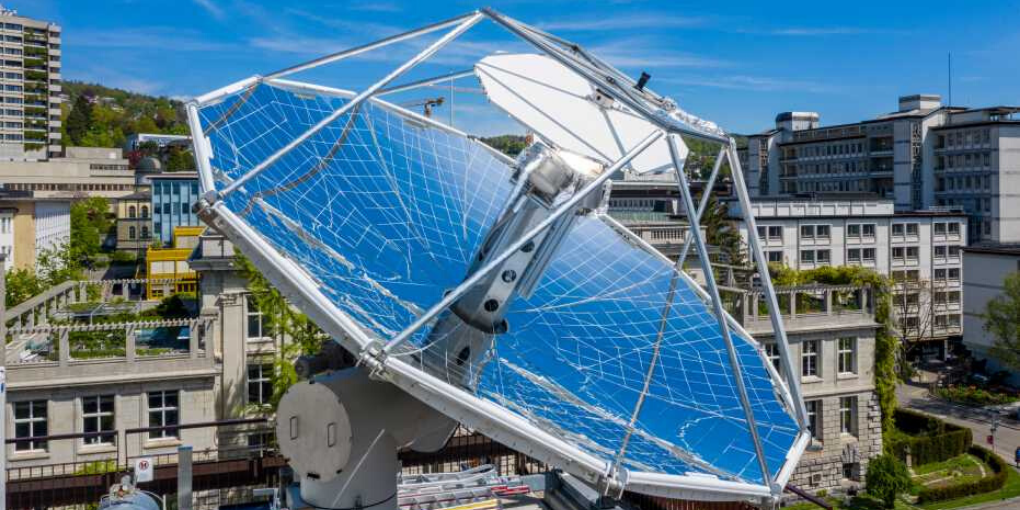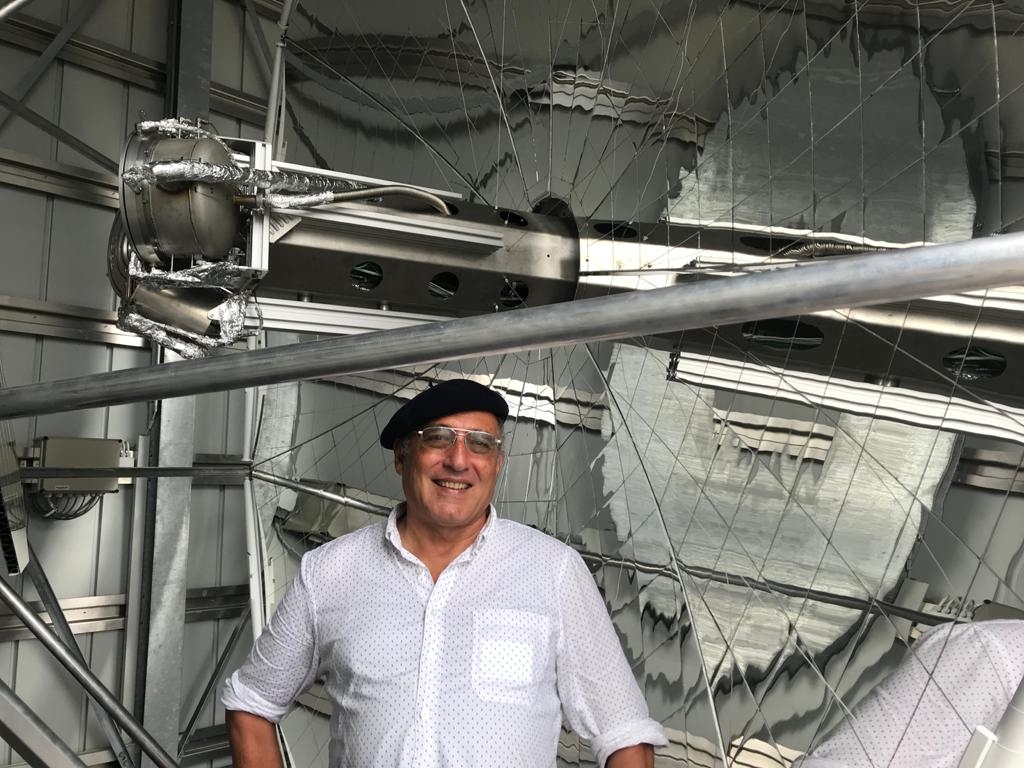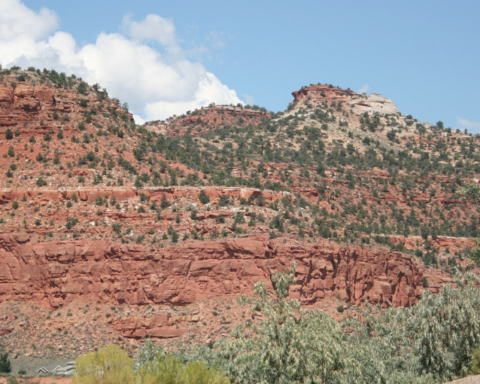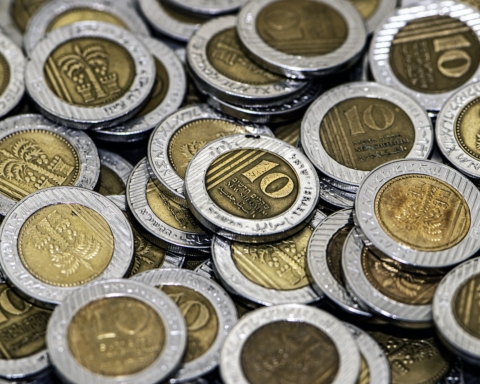What if energy production was not only climate-friendly but also supported flourishing agriculture in the desert? Ralph Steigrad is trying to get Swiss and Israelis around a table for a pilot project to make it happen.
As so often in life, the idea was inspired by a discussion. Ralph Steigrad was still living in Australia at the time, debating with friends about whether nuclear power plants were actually environmentally friendly. Keeping the topic at the top of mind, Steigrad, a trained physicist and mathematician, began to analyze the energy statistics of the world.

“It’s not so easy to find all this data and put it into context, but I quickly realized that the energy, which we derive from nuclear power plants, only make up a small part of the energy used worldwide. Most of the energy is still obtained from coal and petroleum. In theory, I started to wonder what the world would be like if we had only one form of energy?”
Steigrad analyzed that you would need about 17,500 nuclear power plants to power the entire world; there are currently around 440 worldwide. “Uranium resources are very limited and could power the whole world for only five years. In addition, nuclear power plants live about 40 years, and disposal costs more than construction. So, the costs are massively higher than energy gain.”
Immersed in this world of energy, the physicist and IT specialist began to research further, looking for environmentally friendly, and cheaper solutions. He began collecting facts, including the fact that many deserts worldwide, especially those that aren’t too cold, are very suitable for energy generation. For example, in Australia, India, Saudi Arabia, the USA, and on the African continent.
There are already solar systems that generate energy in an environmentally friendly way, especially in deserts – also in the Israeli Negev desert. However, they only generate electricity, where the disadvantage is that it cannot be stored, and can only be converted into other forms of energy at a loss. “You would need solar systems that produce a liquid or gaseous energy: kerosene, gasoline, or hydrogen.”
Flying clean
This is where Professor Aldo Steinfeld, who heads the Chair of Renewable Energies at the ETH Swiss Federal Institute of Technology Zurich, comes into play. In 2019, Prof. Steinfeld presented his “Sun to Liquid” project, which is currently being further developed by the spin-off company Synhelion. In the course of his research, Prof. Steinfeld’s main question was how people can eliminate their carbon footprint, without stopping flying and driving?
Together with his research team, the professor developed a technology for CSP solar cells in which a solar reactor draws CO2 and water from the air, splits them with solar energy, and converts it into kerosene – a milestone in the production of carbon-neutral energies.
Ralph Steigrad followed this development with another inspired thought: “I have a good friend in northern Israel who has a lot of dairy cows. In summer they are housed under a metal roof and are sprayed with water so that they don’t get too hot. At some point, I suggested to this friend that he should just put solar cells on the roof. In the meantime, he is earning more from solar systems than from dairy cows.”

The idea could be perfectly combined with the new solar cells from Prof. Steinfeld in the desert: cattle, dairy cows, and sheep could be kept under an approximately 15-meter-high system made of solar cells. Since the solar cells on the roof take up a lot of the heat, you need even less water to cool the animals down. The water required can also be obtained from the air or with the help of desalination plants developed in Israel, which are extremely energy-friendly. Not only that, but you could also grow vegetables, or soy under the solar system – the ultraviolet light they need to grow would also come under the panels. And the remains of the plants that are not eaten by the animals can be converted into biogas.
Climate-friendly Energy Generation and Sustainable Agriculture
Another spectacular note for the technology in Prof. Steinfeld’s solar system: it can absorb methane gas, which cows emit during digestion and which is 30 times more harmful to the climate than CO2. It can collect it and in turn, convert it into even more kerosene. Another positive side effect of these plants in the desert would be that the desert cools down, and the opportunity for plant growth increases. Overall, the development promises a great deal of potential: for more climate-friendly energy generation, and also for more sustainable agriculture and animal care.
So why haven’t these systems been built on a large scale for a long time? “There are several reasons for this,” explains Steigrad, who has been working on the concept for eight years. “On the one hand, the coal lobby in countries like Australia is still very strong, so alternative energy concepts are, at least, still difficult. In addition, our method is still too unknown and investors struggle to invest a lot of money in the long term.” A pilot project on a four-by-four-kilometer plot of land in the Negev desert would cost around $1.3 billion. Steigrad believes: “Politicians have to accept this innovation: if we could launch a cooperation project between the Israeli and Swiss governments, in order to advance research and give guarantees to potential investors, this would take us a long way. It is conceivable that, for example, investors would buy plots of the plant and thus finance the project.”
A total of 900 by 900 kilometers of desert worldwide, with this solar system, would result in enough energy for the whole world and a 40 percent coverage of the required vegetables and meat – and that’s just in the desert.
Forests would no longer need to be cut down. Steigrad, who lives in Israel and represents the Swiss in Israel at the OSA, Organization of the Swiss Abroad, hopes to achieve a turnaround in the energy and environmental sector through such a project that can only succeed with global support.
While Israel would be the perfect country for the pilot project thanks to its expertise in desert agriculture, Steigrad has found another country that is excellently suited for the project. “Saudi Arabia is planning a Solar City, they are already working on the so-called Neom project. The country has the perfect desert for these facilities. And this piece of land that is best suited for this is only 20 kilometers from Israel.”
Learn more here.
Original article was written in German by Katharina Höftmann Ciobotaru, translated by Zo Flamenbaum








